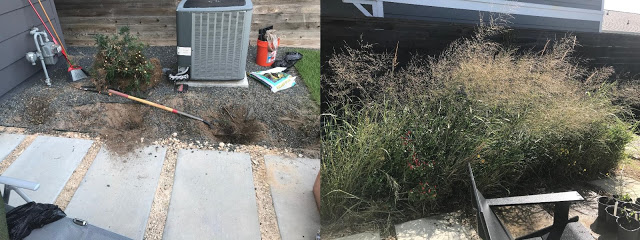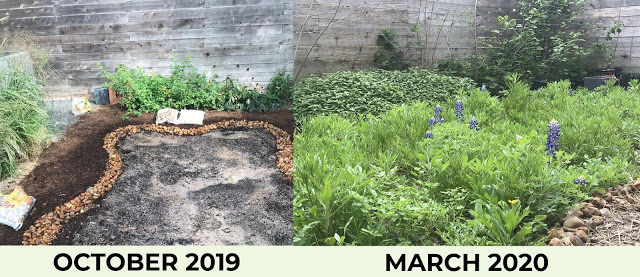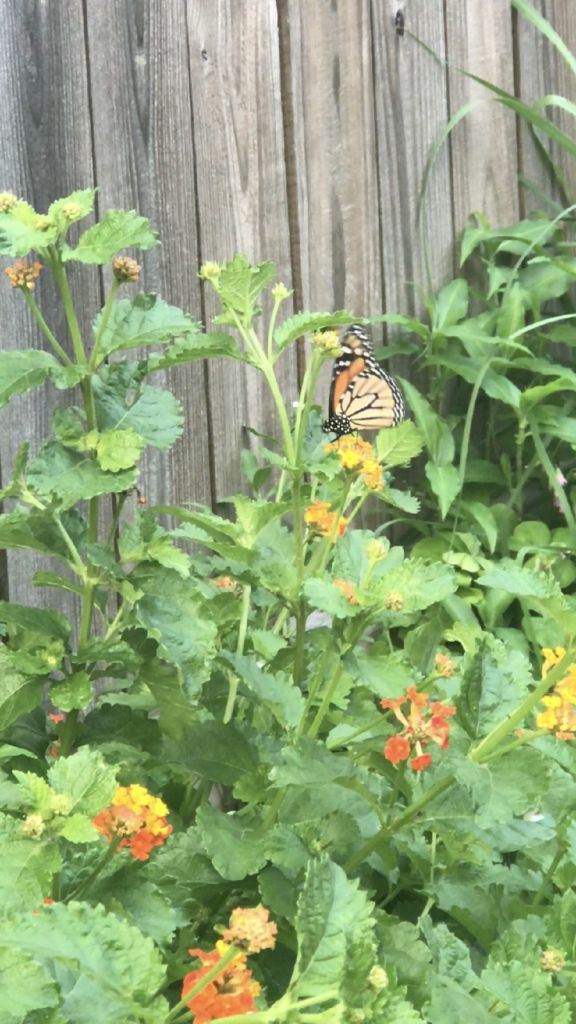An Urban Backyard Pocket Prairie
Creating a Pocket Prairie in an Urban Backyard
From the May 19, 2020 Houston Audublog post by Patrick Bolgren
In September of 2017, my girlfriend Amanda and I, along with our dog Scout, moved out of our apartment and into a house in Houston’s Sunset Heights. One of the selling points of this house was that it had a small backyard the three of us could enjoy together. It was a simple space comprised of zoysia grass, Japanese yew, and bamboo.

In June of 2018, Scout was sniffing around our backyard and decided to eat a couple of Japanese yew berries that had fallen on the ground. This led to her getting sick and spending the next two nights recovering at a veterinary clinic. This is the event that made me start to question everything growing in our backyard. Why did we have grass, shrubs, and bamboo from Asia? Why had we never seen a butterfly in our yard?
We decided we needed to make some changes. To begin my research, I read The Houston Atlas of Biodiversity by Houston Wilderness, Bringing Nature Home by Douglas W. Tallamy, and Native Texas Plants by Sally Wasowski and Andy Wasowski. After reading Bringing Nature Home, I understood how the landscaping choices we make can have a profound impact on the environment around us. It became clear that planting native was the only path forward.
First order of business was getting rid of the Japanese yew and bamboo. To remove the Japanese yew and bamboo I used a drain spade, loppers and an axe. I filled the holes with soil from Nature’s Way Resources and planted Switchgrass and Indiangrass bought from Houston Audubon’s Natives Nursery.

In October of 2019, we decided to take the plunge and remove our zoysia grass and create a pocket prairie. This was not an easy decision but one that we felt was necessary to have a more positive impact on our environment. Described below are the steps we took to create our pocket prairie:
- Using a drain spade, we cut the grass into 1 sq ft. pieces and methodically removed the grass while keeping as much of the topsoil in place as possible.
- I established the shape of the pocket prairie with a garden hose and made sure to keep enough room for a thin mulch pathway along the perimeter. Putting cardboard under the mulch pathway has helped keep weeds out.
- Using a mix of wildflower seeds purchased from Native American Seed at www.seedsource.com. I spread the recommended amount of seed by hand and made sure to get good seed to soil contact by gently walking over the newly seeded area.
- Luckily, as we finished, it started to lightly rain and proceeded to rain for the next several days. By day 4, seeds started to germinate.


With a little effort, we have turned a lifeless backyard into a biodiverse ecosystem with more insect activity than we anticipated. As I sit and type this, there are countless bees along with a Monarch and Red Admiral butterfly continuing a relationship with the plants they have evolved with for thousands of years.
I would encourage anyone, no matter the size of the space, to create their own pocket prairie. When you give back to nature, nature sure does give back to you in the most incredible and rewarding ways.
Photos from Patrick's Backyard
A Monarch Butterfly on a Texas Lantana (Lantana urticoides).

A Green Anole basking on a native grass.

A species of hoverfly resting on the leaf of a coneflower.

A Red Admiral Butterfly among several species of native wildflower.

